Tech trends from Paris-Roubaix: Nine things we learned
From ever-growing tyres to the proving ground of 1x and the death of the 'special Roubaix bike' - here's what we learned following the Queen of the Classics over two days
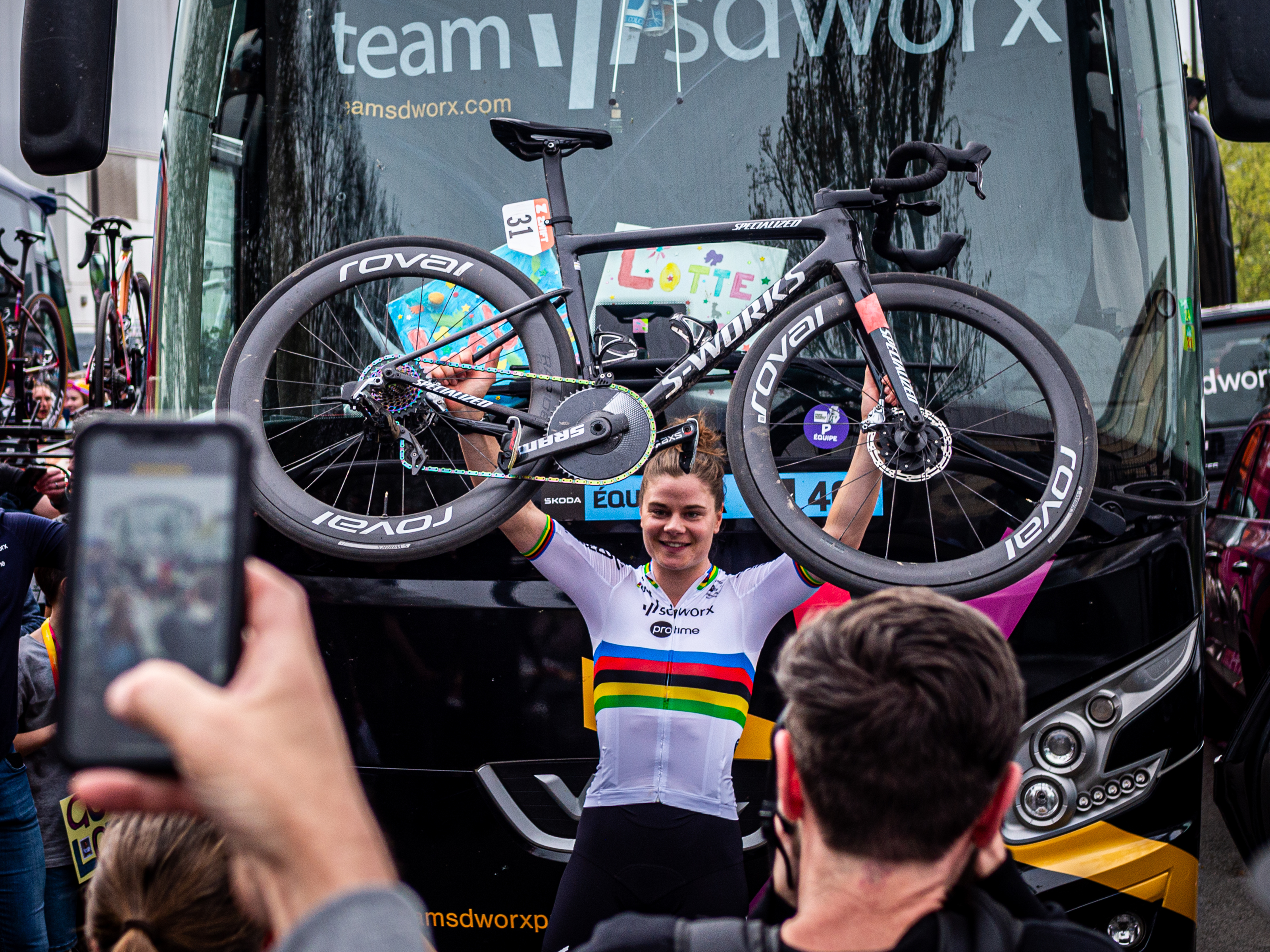
Alas, the dust has settled on another epic Paris-Roubaix weekend. The 'Holy Week' is over, and although the rain steered clear, Roubaix was still treated to a rainbow display as both Lotte Kopecky and Mathieu van der Poel took victory in their World Champions' jerseys. Cue the 'double rainbow' viral video.
As ever, Cyclingnews had a team of dedicated reporters on the ground following the race and perusing the paddock to seek out any new tech. We've already brought you the news that Israel Premier Tech would race aboard gravel bikes. We confirmed that the Specialized Roubaix wouldn't get an appearance in its namesake race. We unearthed a mega-aero-looking new bike from the Uno-X camp, and we compiled two huge tech galleries, covering tech from the women's race and tech from the men's race.
But as the hangover from the weekend's chaos - and all the Westmalle Tripel - wears off, some overarching tech trends begin to rise to the surface. With every edition of Paris-Roubaix, the world of bike tech moves along at pace. For example, tyres get wider, chainrings get bigger, and if the past two editions are anything to go by, the average speeds get faster.
But there are many more trends and conclusions to draw, nine in total, so that's exactly what we've done.
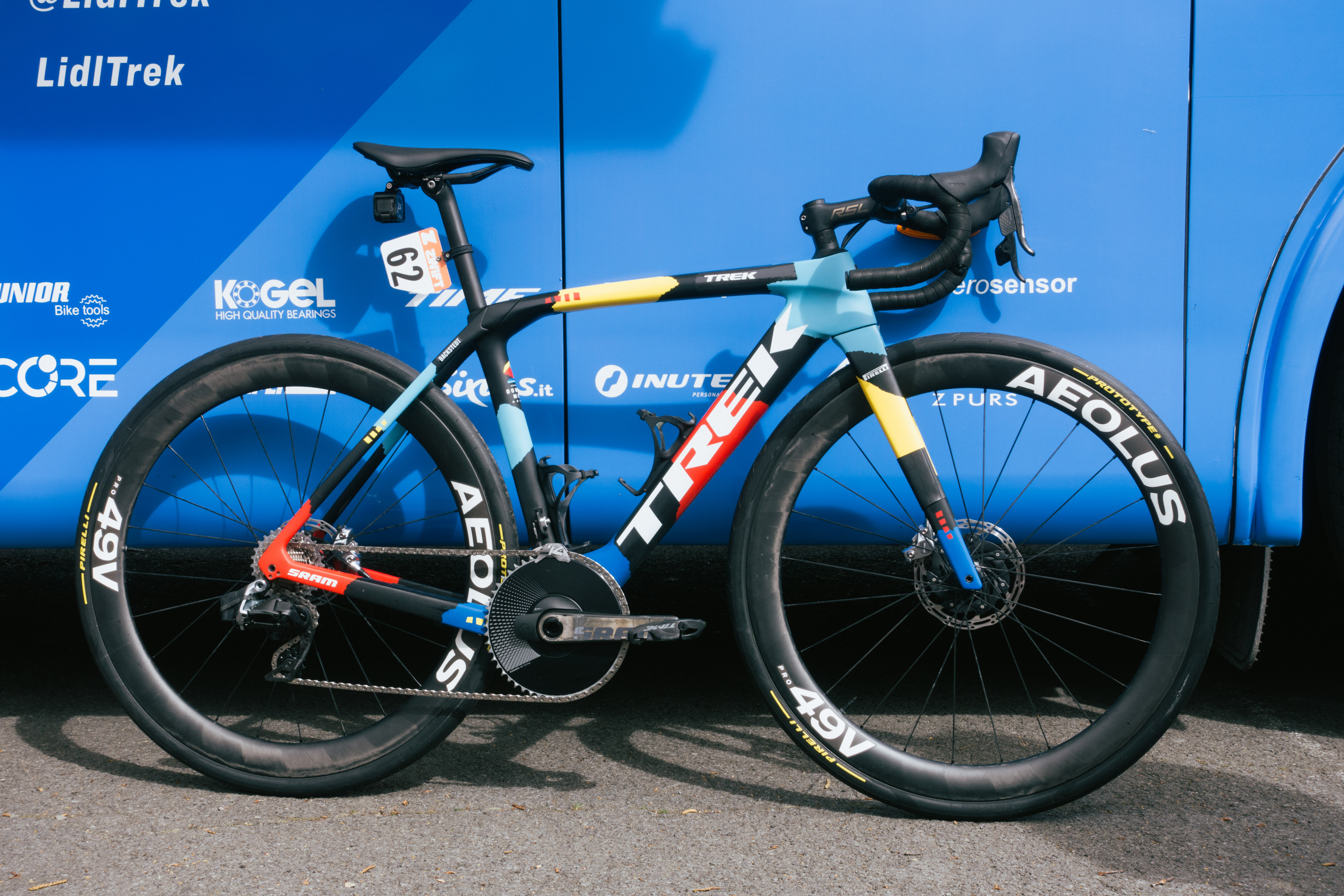
Women's Paris-Roubaix tech is more interesting than men's
In the days before the event, I spoke with the Specialized S-Racing team who talked me through the equipment selection process that teams undergo. It led to a story about Specialized riders ditching the Roubaix, but my biggest takeaway was how the team and the brand worked together to choose the equipment that would likely be fastest for the conditions they'd face and the strategy they had. For example, they said that in 2023, SD-Worx used the Tarmac SL7 because they had fewer cobbles to contend with, whereas the men went with the Roubaix, apart from Nils Pollitt who wanted to get in the early breakaway.
This year, the men shunned the Roubaix and instead used the Tarmac SL8, preferring to accept the detriment on the cobbles because the real race was on the road; the race for position in the lead-up to each sector.
What that meant is that almost ubiquitously, the men used typical aero bikes with little in the way of cobble-smoothing hacks besides wider tyres, extra bar tape, and occasionally a change of handlebars.
Get The Leadout Newsletter
The latest race content, interviews, features, reviews and expert buying guides, direct to your inbox!
Interestingly, despite SD-Worx taking a similar approach to the men, the general approach to equipment in the women's peloton was significantly more mixed. The podium itself was a perfect example of this, with the winner Lotte Kopecky on an all-rounder, 2nd place Elisa Balsamo on an endurance bike, and 3rd place Pfeiffer Georgi on a no-holds-barred aero bike. Proof if ever we needed it that it's the rider, not the bike, that wins the race.
But the benefit of such a mix is that it's much more interesting to nerd out at the start.
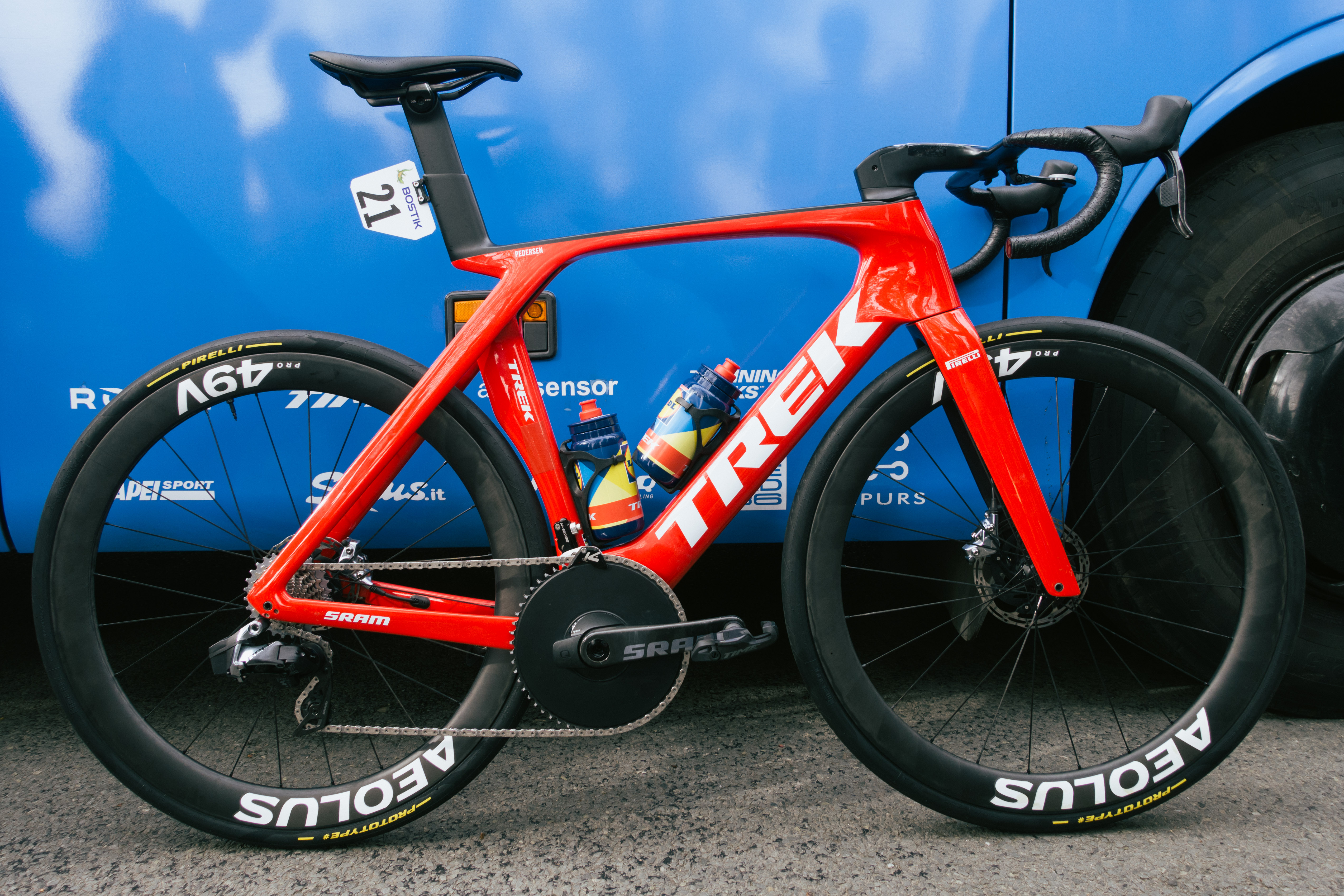
Aero is king, the 'special Roubaix bike' is dead
Not so much the aero bike, but aero in general. In years gone by, tech hacks at Paris-Roubaix have centred on making the bike faster over the cobbles. This has resulted in riders using bikes with wild cobble-smoothing hacks. Does anyone remember Rockshox forks or the full-suspension Bianchi?
Now though, aero bikes were more prevalent than endurance bikes, and there were as many hacks focussed on aero as there were on anything else. Cue Alexander Kristoff, whose new prototype Dare bike leaves no doubt as to its aero intentions. Also cue most SRAM-sponsored riders who all swapped to 1X with an aero chainring. And let's not forget Josh Tarling, whose Pinarello Dogma F was kitted out with a frankly bonkers 62T 1x aero chainring.
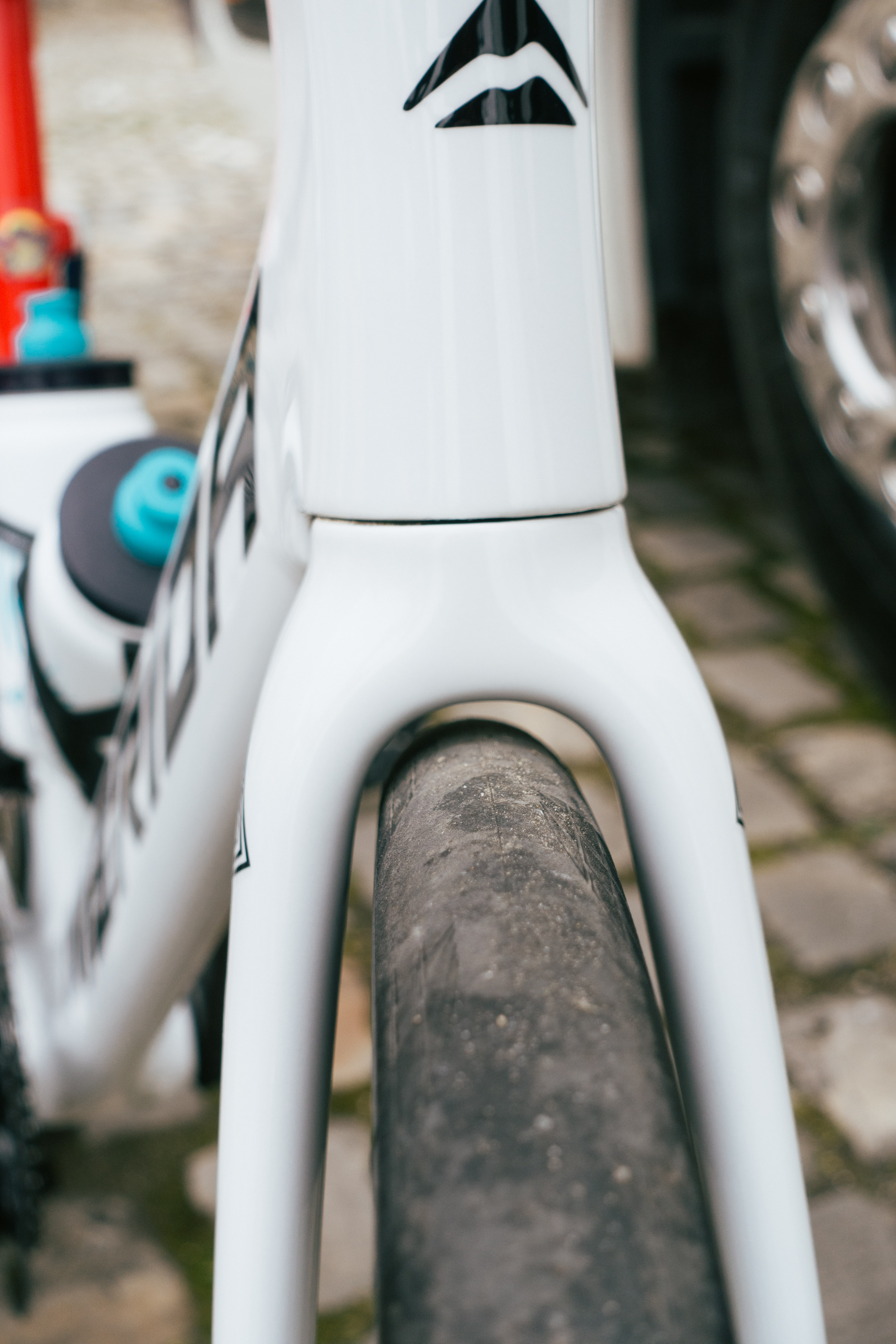
Cyclocross tyres are now narrower than road
My esteemed colleague Will brought along his trusty vernier callipers to measure the actual width of riders' tyres, and the big takeaway was that if this were a cyclocross race, most riders would have been kicked out before the race began.
While the most common choice of tyre size was 32c, with the wide rims available today, most measured wider. Lidl-Trek, for example, were running Prototype Pirelli tyres in a 32c width, wrapped around Bontrager Aeolus 49 gravel wheels. The actual width ballooned to 34.5mm. Beating that, however, is Fred Wright and his Bahrain Victorious team, who used the Continental GP5000 AS TR tyre in the 35mm option.
Cyclocross, an off-road discipline, limits tyres to 33mm wide, and has done so since July 1, 2010, when the restriction shrunk from 35mm. Will the UCI decide to relax that rule once again, or will they choose to retain the 33c rule in order to ensure differentiation between cyclocross and gravel, and the tech that comes with it? Only time will tell.
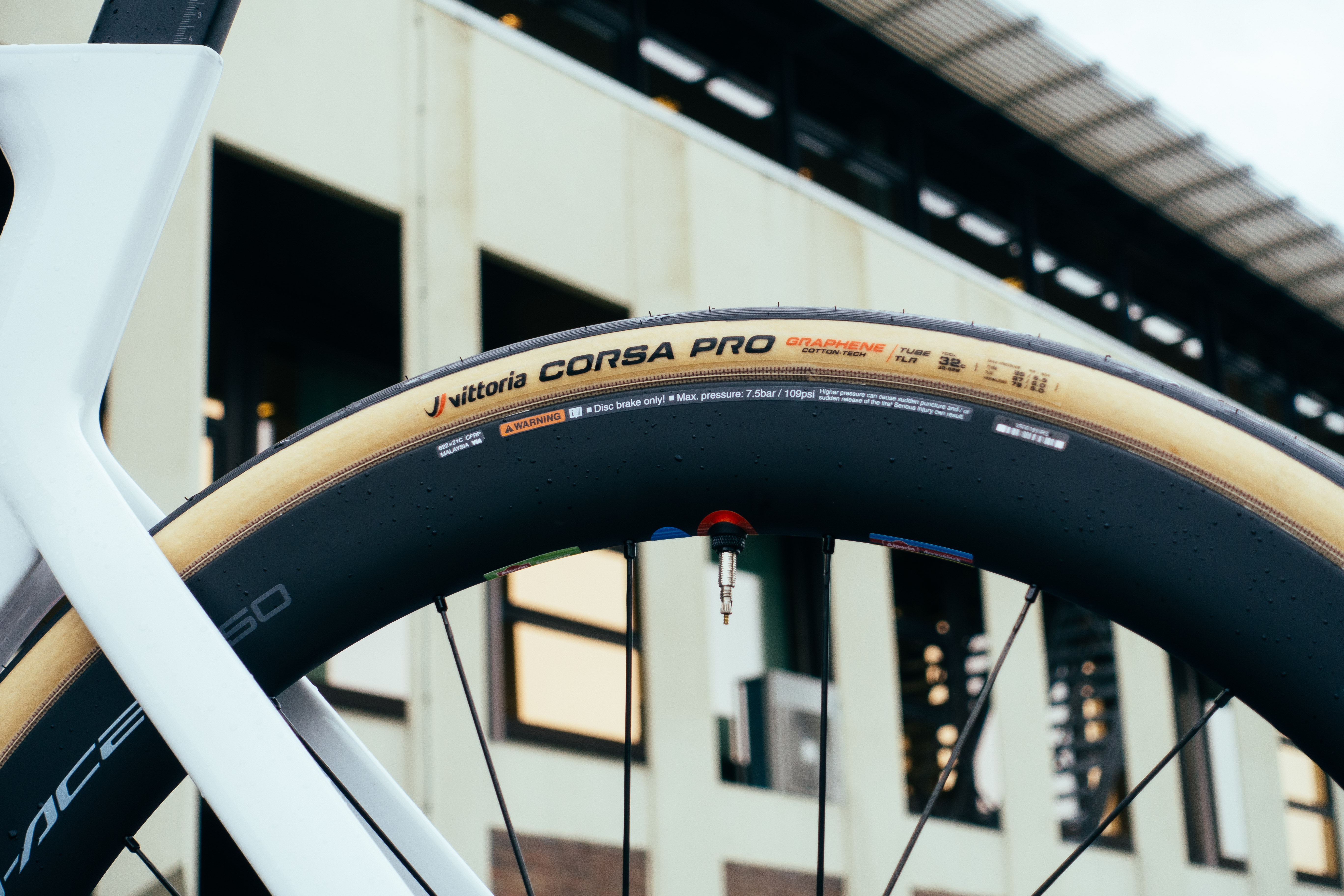
32c tyres are standard, but we predict wider is coming
The actual width of a tyre and the number on the sidewall can differ quite a bit as the rim width will affect the final shape once inflated. But going by the manufacturer's size designation, 32c was the most common choice for both the men and women at Paris-Roubaix.
Here at Cyclingnews, we think that this choice will continue to get wider each year.
The optimal tyre width is, naturally, a balance of a few components working together. Tyre clearance is the most important factor, because if a tyre rubs on the frame, it's immediately slower through friction and can lead to catastrophic damage.
Holistic design is the next big thing to consider: if a rim is designed to work best with 25c tyres, a 35c option will blow up with a less aerodynamic 'lightbulb' profile and likely handle less confidently than if it were paired with a rim designed for wider tyres.
Currently, most new road rims are being designed to work with tyres around the 28 to 30mm width, and tyre clearances in road bike frames allow around 32mm. If clearances in race bike frames (and front derailleurs, as we'll get to below) were wider, and rims were designed around 35mm tyres or more, then we'd probably start to see brands like Pirelli, Continental, Vittoria and Specialized making wider road tyres too.
Of course, we already are seeing this to a point in gravel. Gravel wheels are being designed for wider tyres, endurance bikes have clearance for 40mm and more, and for the everyday consumer, that's probably optimal. The consumer has long opted to buy what the pros are using though, so we think we're at a crossroads.
Either consumers will demand wider clearances on race bikes and brands will respond accordingly, or we'll start to see consumer demand begin to diverge away from what the pros use.
As tyres get wider, they become aerodynamically slower because of their greater frontal area. That's offset by other things such as lower rolling resistance, more comfort, increased grip and more assured handling. Exactly where the tipping point is depends on the terrain, and of course, Paris-Roubaix's terrain is about as brutal as it gets. It's unlikely that the specific needs of one race - Paris-Roubaix - are enough to motivate brands to change their flagship race bike, but we're curious to see where racers, consumers, and ultimately the brands finally decide the tipping point should be.
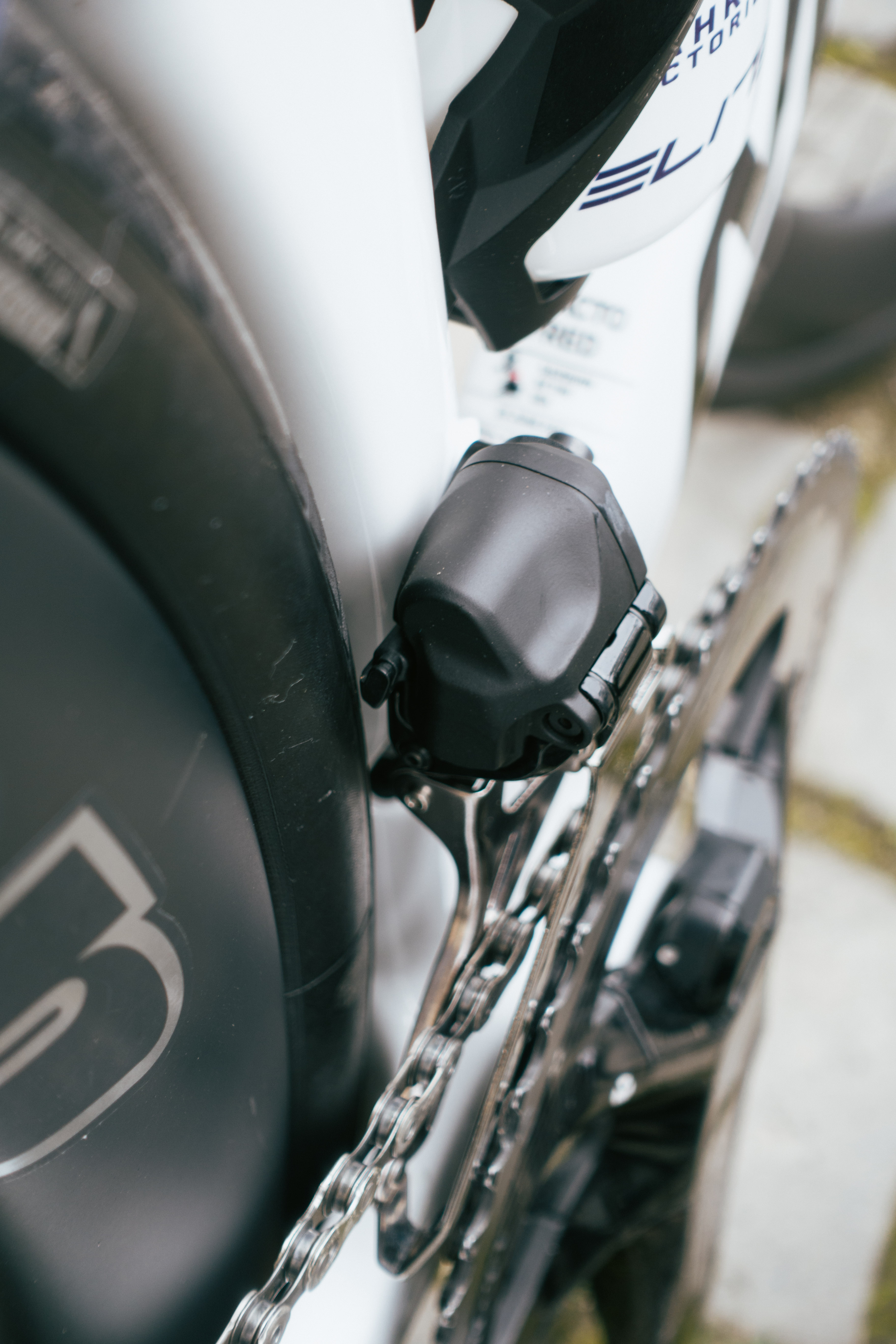
Frame clearance isn't the issue, front derailleur clearance is
Something that we didn't expect to learn at this year's Paris-Roubaix is that although tyre clearance in the frame is important, it's not the limiting factor for Shimano-sponsored riders, their front derailleur was.
As Bahrain-Victorious lined up for the men's race, we spotted their Continental GP5000 AS TR tyres were the 35mm wide option. Frame clearance was tight, but not as tight as the millimetre gap between the rear tyre and the front derailleur. Given rims can easily deflect more than this, it's entirely possible that the two components fouled each other at points during the race, but there were no catastrophes that we heard of.
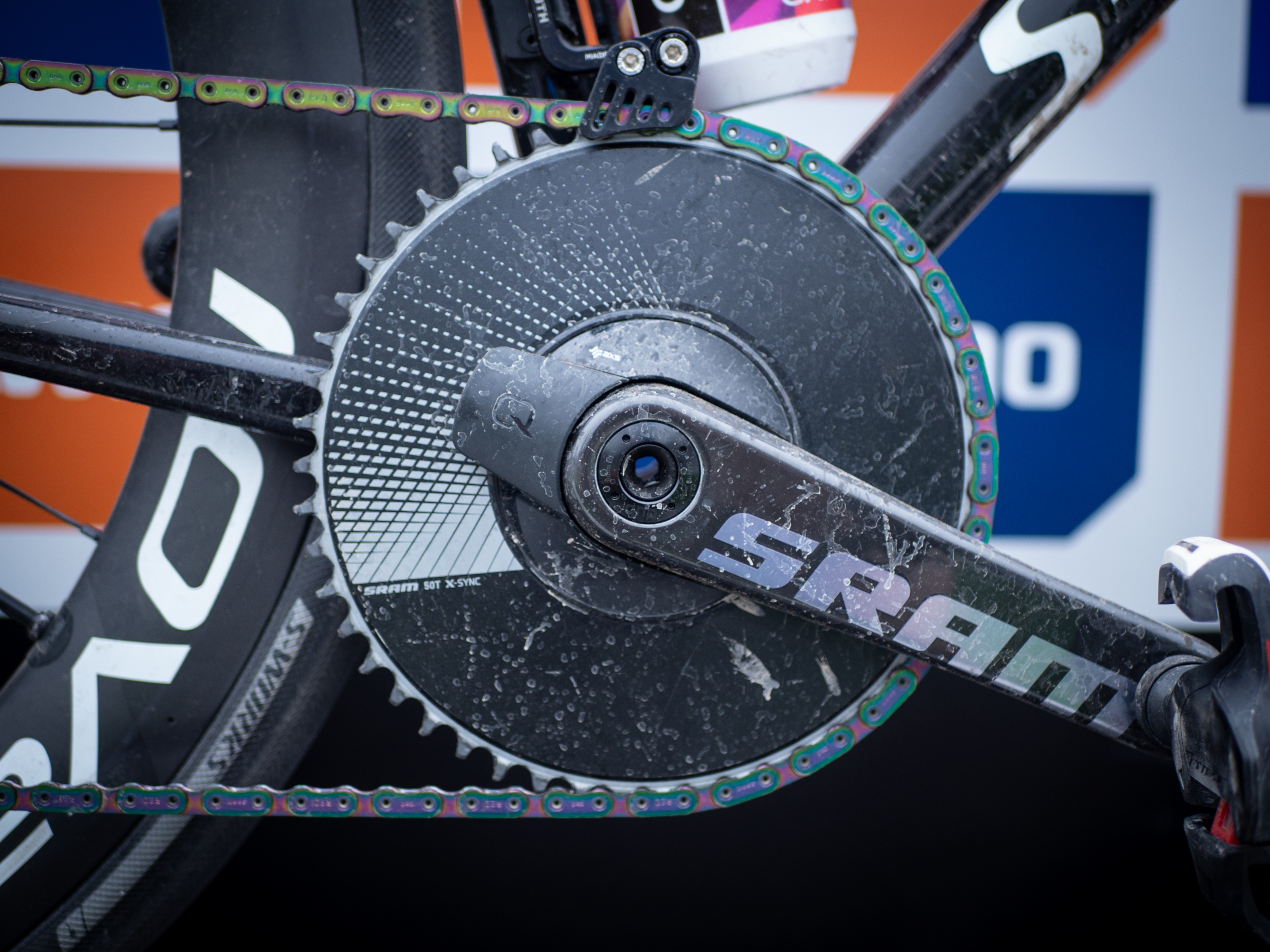
1x is here to stay, and bigger is better
Complementing our prior point, if you remove the front derailleur, you immediately gain a little bit of extra clearance, and SRAM-sponsored riders know this. Dozens of them were running a single aero chainring.
For races like Paris-Roubaix which is mostly flat, the inner chainring and front derailleur are just dead weight and aerodynamic drag being carried around, so running this set-up is a no-brainer.
We know Shimano can do it, because Josh Tarling did so, but we were surprised it wasn't more common. For those who did run 1x, bigger seemed to be better. Kopecky was perhaps an outlier with her 50T chainring, as most riders we saw ran a 54T or bigger.
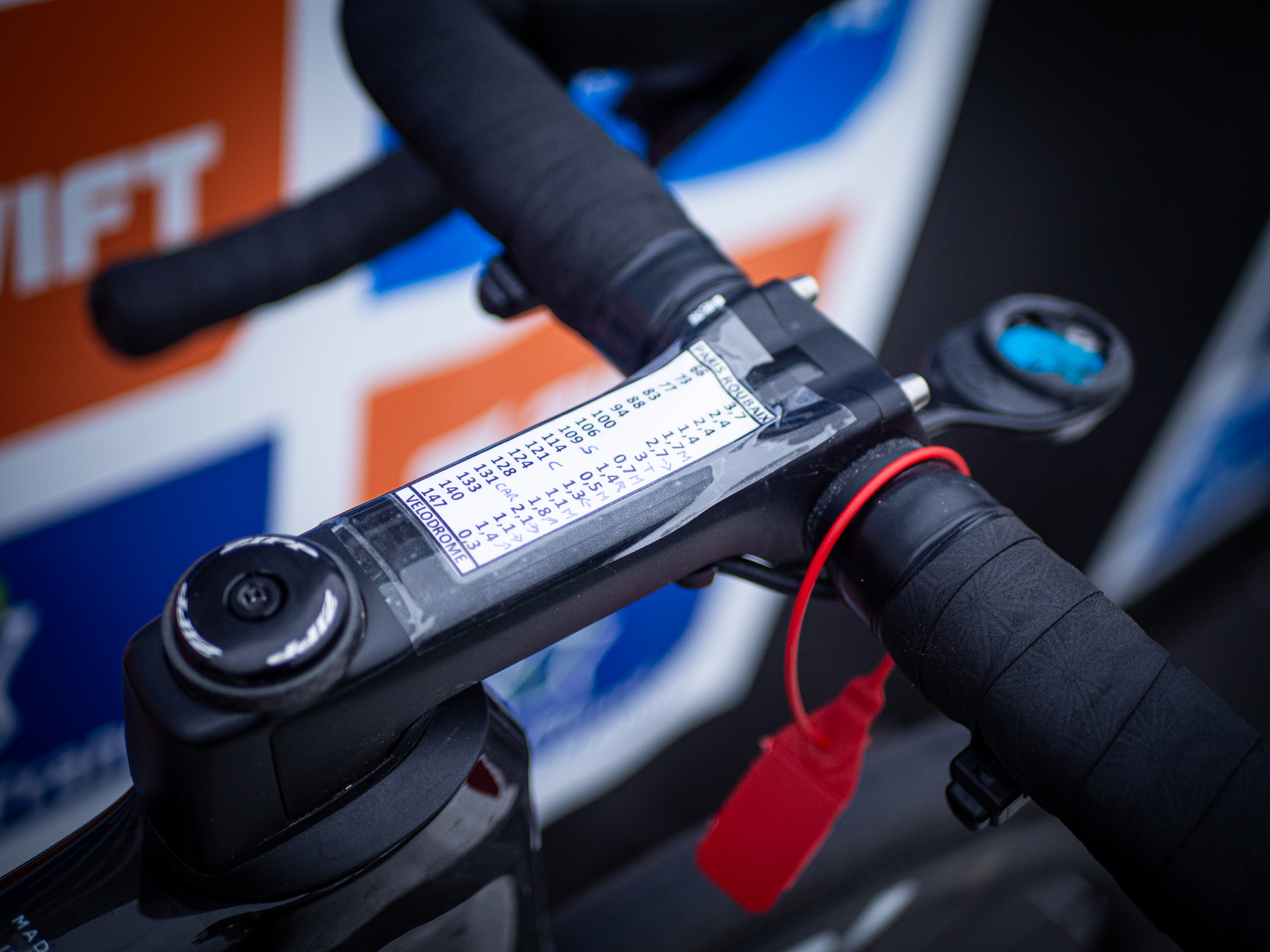
Riders dislike aero cockpits for the cobbles
Lotte Kopecky, as well as the whole of the Soudal-QuickStep men's team, ran a standard stem with a round handlebar rather than the Roval Rapide one-piece cockpit. In doing so, they added at least four (and probably more) watts of aerodynamic drag, based on Specialized's own claims.
They weren't the only ones, either. Patrolling the paddocks, the mix of preferred setups was so random it was almost resplendent of a bike shop bargain bin.
The reason for their choice was unconfirmed, but expected to be because it's easier to loosely hold the smaller handlebar and let it bounce around in your hands a little as a form of extra bump-smoothing compliance, rather than try to grip it tightly.
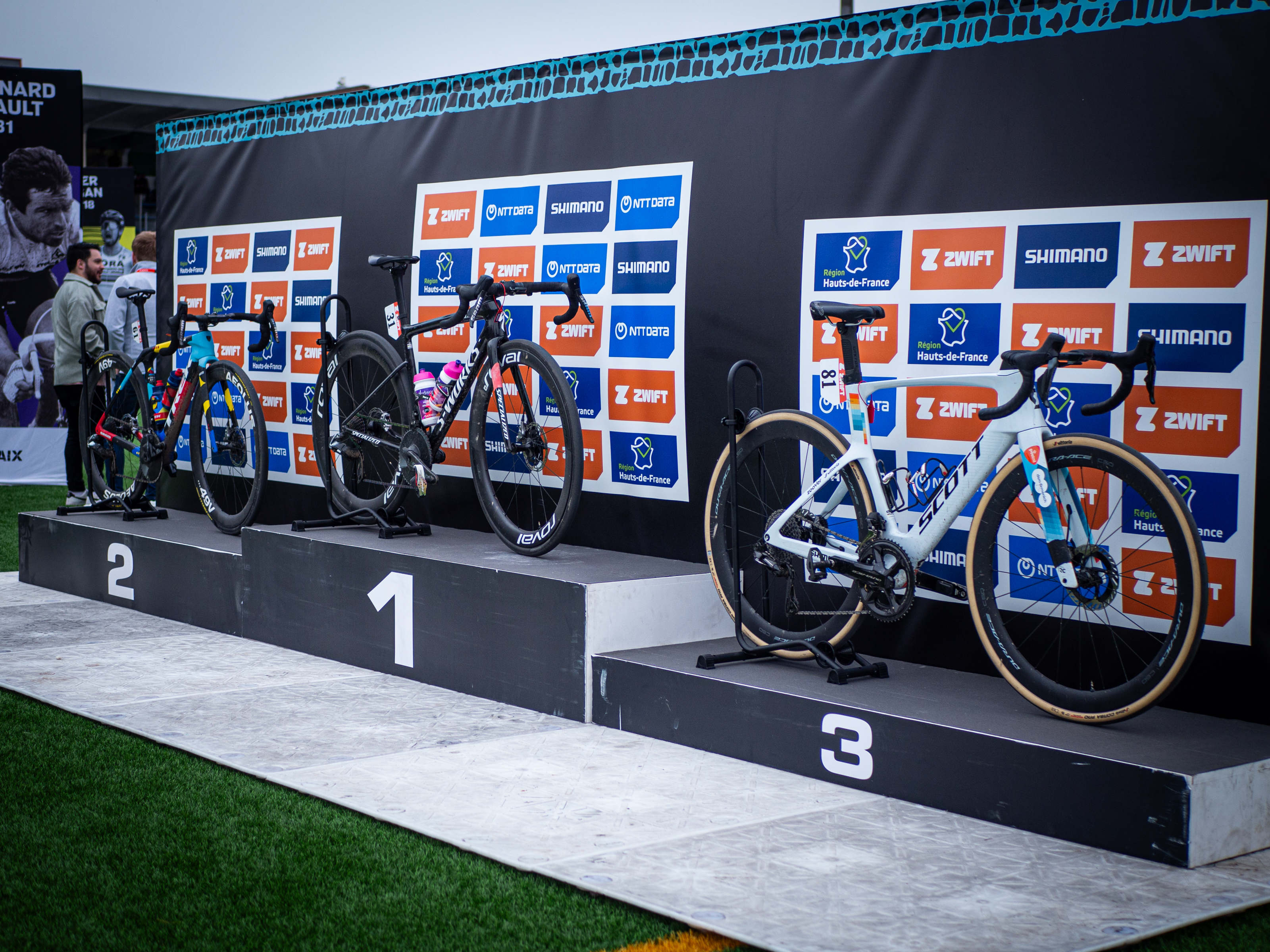
There's no perfect bike/tyre strategy
One of the big takeaways from the 2024 Paris-Roubaix is that teams rarely agree on the perfect equipment setup.
Teams can only work within the boundaries of their sponsors' product offering, of course, even if they do occasionally stray beyond those agreements, but even across teams that shared the same suppliers, we spotted a significant variance in chosen kit.
On the bike front, the three different genres on the women's podium is a testament to that, with endurance bikes, aero bikes and all-rounders being evenly spread across the wider peloton too. In the men's race, it was slightly more cut and dry with the teams typically using the most aero option available to them. That is save for Israel Premier-Tech, who threw in a curve ball by racing the Factor Ostro Gravel bike.
Among Continental-sponsored teams, some went with size 32, whereas others went with 35mm. Some used inserts, while others didn't. A couple of teams even remained on tubular tyres.
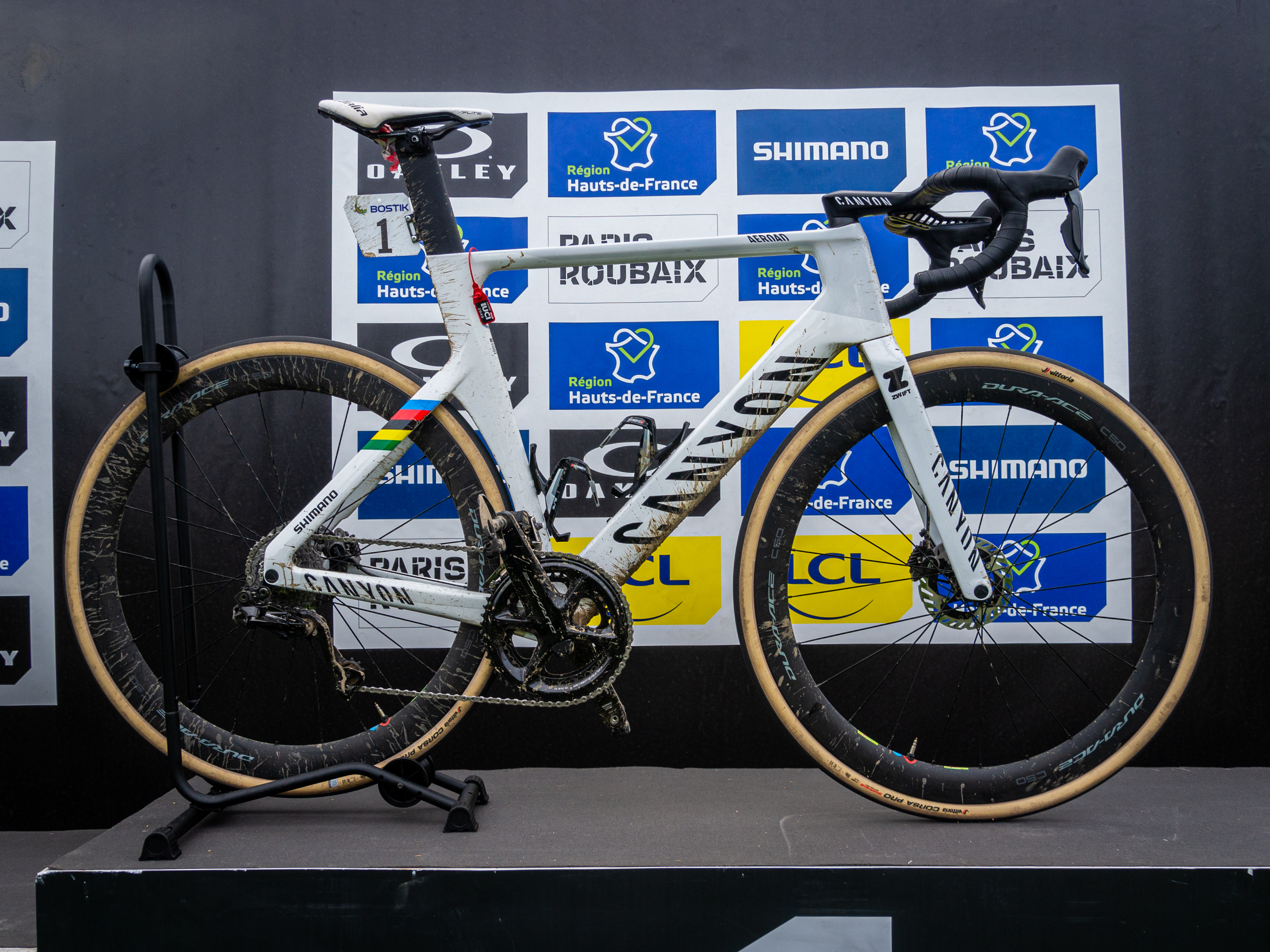
Today's bikes are good... really good
The men's edition of Paris-Roubaix was the fastest in history. It beat the record set in 2023, which in turn beat the record set in 2022. That means we've had three years of record-breaking speed in a row. That's helped by weather, of course, and it's also a testament to the calibre of the current WorldTour peloton, but there's no denying that the capability of the bikes is helping.
There mightn't have been any groundbreaking cobble-smoothing hacks this year, but race bikes these days are good. Darn good.

Josh is Associate Editor of Cyclingnews – leading our content on the best bikes, kit and the latest breaking tech stories from the pro peloton. He has been with us since the summer of 2019 and throughout that time he's covered everything from buyer's guides and deals to the latest tech news and reviews.
On the bike, Josh has been riding and racing for over 15 years. He started out racing cross country in his teens back when 26-inch wheels and triple chainsets were still mainstream, but he found favour in road racing in his early 20s, racing at a local and national level for Somerset-based Team Tor 2000. These days he rides indoors for convenience and fitness, and outdoors for fun on road, gravel, 'cross and cross-country bikes, the latter usually with his two dogs in tow.